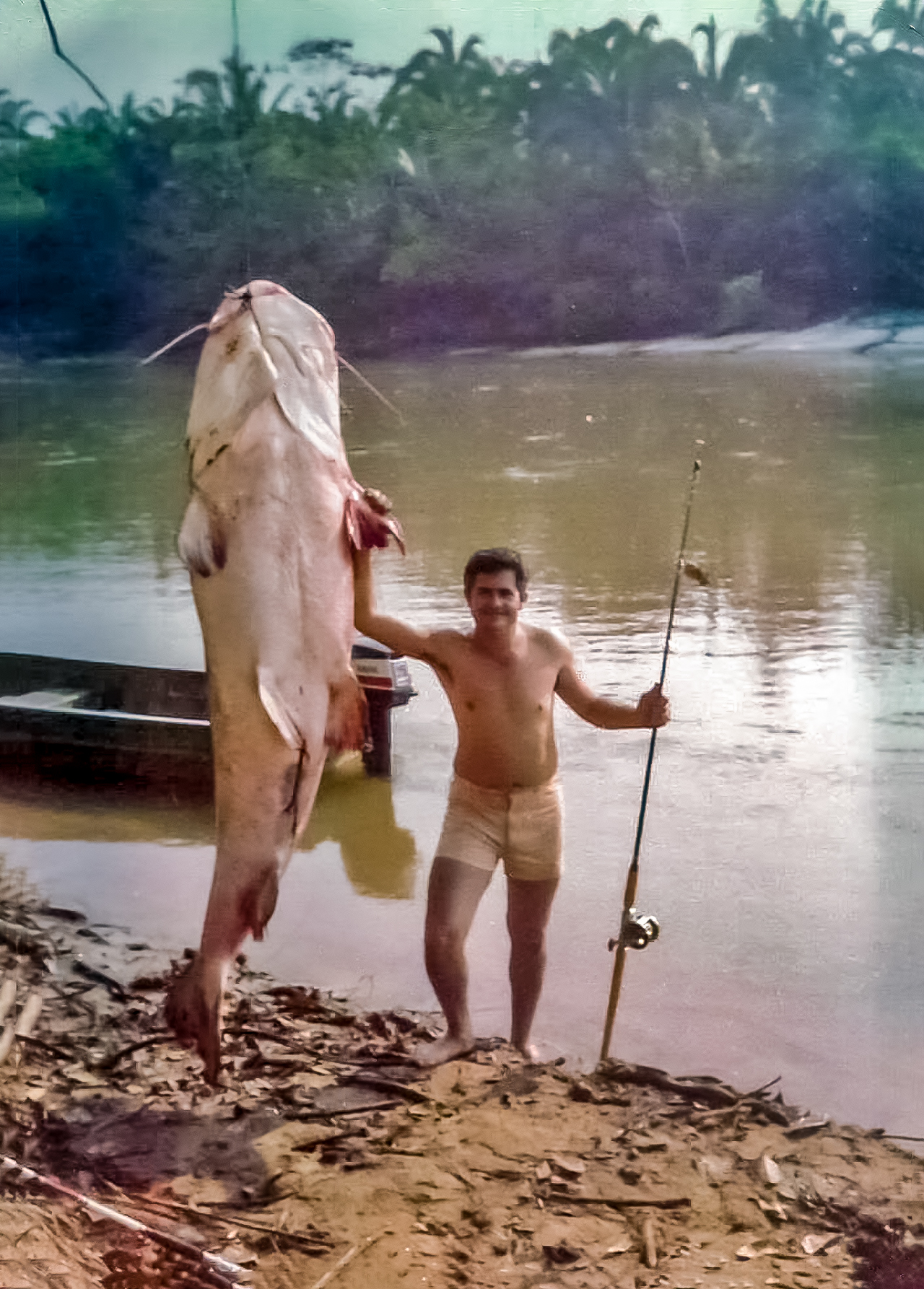Piraiba on:
[Wikipedia]
[Google]
[Amazon]
''Brachyplatystoma filamentosum'', the piraíba or kumakuma, is a

species
In biology, a species is the basic unit of classification and a taxonomic rank of an organism, as well as a unit of biodiversity. A species is often defined as the largest group of organisms in which any two individuals of the appropriate s ...
of large catfish
Catfish (or catfishes; order Siluriformes or Nematognathi) are a diverse group of ray-finned fish. Named for their prominent barbels, which resemble a cat's whiskers, catfish range in size and behavior from the three largest species alive, ...
of the family Pimelodidae
The Pimelodidae, commonly known as the long-whiskered catfishes, are a family of catfishes ( order Siluriformes).
Taxonomy
The family Pimelodidae has undergone much revision. Currently, it contains about 30 genera and about 90 recognized and kno ...
and genus Brachyplatystoma
''Brachyplatystoma'' is a genus of catfish from the family Pimelodidae. As the occasionally used common name goliath catfishes indicates, this genus includes some of the largest species of catfish, including the piraíba, ''B. filamentosum'', whi ...
that is native to Amazon and Orinoco River basins and fluvials in Guianas and northeastern Brazil.
Distribution
It is a much widespread species that is found rivers and estuaries of Amazon and Orinoco watersheds, Guianas and northeastern Brazil.Description
It grows to a length of 2.8 m. The largest Amazon Piraíba records 2 – 2.5 m weighing more than 150 kg. Dorsum dark to light grey with small dark spots on caudal-fin or peduncle. Dorsal fin with pink shading. Caudal fin deeply-forked. Juveniles exhibit dark body spots or blotches. It is entirely piscivorous preying on loricariids and other bottom-dwelling fish.
Ecology
''Brachyplatystoma filamentosum'' is found in bothfreshwater
Fresh water or freshwater is any naturally occurring liquid or frozen water containing low concentrations of dissolved salts and other total dissolved solids. Although the term specifically excludes seawater and brackish water, it does include ...
and brackish water
Brackish water, sometimes termed brack water, is water occurring in a natural environment that has more salinity than freshwater, but not as much as seawater. It may result from mixing seawater (salt water) and fresh water together, as in estua ...
systems. The species is a demersal
The demersal zone is the part of the sea or ocean (or deep lake) consisting of the part of the water column near to (and significantly affected by) the seabed and the benthos. The demersal zone is just above the benthic zone and forms a layer of ...
potamodromous
Fish migration is animal migration, mass relocation by fish from one area or body of water to another. Many types of fish migrate on a regular basis, on time scales ranging from daily to annually or longer, and over distances ranging from a few ...
fish that commonly inhabits deeper, flowing channels with soft bottoms.
Uses
Though a massive species, Piraíba is considered as a game fish and commercial fish. Generally harmless, it is known to be an obligatepiscivore
A piscivore () is a carnivorous animal that eats primarily fish. The name ''piscivore'' is derived . Piscivore is equivalent to the Greek-derived word ichthyophage, both of which mean "fish eater". Fish were the diet of early tetrapod evoluti ...
; however, stomach contents are said to include parts of monkeys.
References
{{Taxonbar, from=Q1577680 Pimelodidae Catfish of South America Freshwater fish of Brazil Taxa named by Hinrich Lichtenstein Fish described in 1819